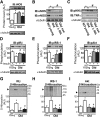Targeted disruption of inducible nitric oxide synthase protects against aging, S-nitrosation, and insulin resistance in muscle of male mice
- PMID: 22991447
- PMCID: PMC3554348
- DOI: 10.2337/db12-0339
Targeted disruption of inducible nitric oxide synthase protects against aging, S-nitrosation, and insulin resistance in muscle of male mice
Expression of concern in
-
Expression of Concern. Eduardo R. Ropelle, José R. Pauli, Dennys E. Cintra, Adelino S. da Silva, Cláudio T. De Souza, Dioze Guadagnini, Bruno M. Carvalho, Andrea M. Caricilli, Carlos K. Katashima, Marco A. Carvalho-Filho, Sandro Hirabara, Rui Curi, Lício A. Velloso, Mario J.A. Saad, and José B.C. Carvalheira. Targeted Disruption of Inducible Nitric Oxide Synthase Protects Against Aging, S-Nitrosation, and Insulin Resistance in Muscle of Male Mice. Diabetes 2013;62:466-470. DOI: 10.2337/db12-0339. PMID: 22991447 PMCID: PMC3554348.Diabetes. 2023 Dec 1;72(12):1886. doi: 10.2337/db23-ec12d. Diabetes. 2023. PMID: 37870447 Free PMC article. No abstract available.
Abstract
Accumulating evidence has demonstrated that S-nitrosation of proteins plays a critical role in several human diseases. Here, we explored the role of inducible nitric oxide synthase (iNOS) in the S-nitrosation of proteins involved in the early steps of the insulin-signaling pathway and insulin resistance in the skeletal muscle of aged mice. Aging increased iNOS expression and S-nitrosation of major proteins involved in insulin signaling, thereby reducing insulin sensitivity in skeletal muscle. Conversely, aged iNOS-null mice were protected from S-nitrosation-induced insulin resistance. Moreover, pharmacological treatment with an iNOS inhibitor and acute exercise reduced iNOS-induced S-nitrosation and increased insulin sensitivity in the muscle of aged animals. These findings indicate that the insulin resistance observed in aged mice is mainly mediated through the S-nitrosation of the insulin-signaling pathway.
Figures




Comment in
-
Aging and insulin resistance: just say iNOS.Diabetes. 2013 Feb;62(2):346-8. doi: 10.2337/db12-1239. Diabetes. 2013. PMID: 23349542 Free PMC article. No abstract available.
References
-
- Benhar M, Forrester MT, Stamler JS. Protein denitrosylation: enzymatic mechanisms and cellular functions. Nat Rev Mol Cell Biol 2009;10:721–732 - PubMed
-
- Carvalho-Filho MA, Ueno M, Hirabara SM, et al. S-nitrosation of the insulin receptor, insulin receptor substrate 1, and protein kinase B/Akt: a novel mechanism of insulin resistance. Diabetes 2005;54:959–967 - PubMed
-
- Sugita H, Fujimoto M, Yasukawa T, et al. Inducible nitric-oxide synthase and NO donor induce insulin receptor substrate-1 degradation in skeletal muscle cells. J Biol Chem 2005;280:14203–14211 - PubMed
-
- Yasukawa T, Tokunaga E, Ota H, Sugita H, Martyn JA, Kaneki M. S-nitrosylation-dependent inactivation of Akt/protein kinase B in insulin resistance. J Biol Chem 2005;280:7511–7518 - PubMed
Publication types
MeSH terms
Substances
LinkOut - more resources
Full Text Sources
Medical
Molecular Biology Databases

